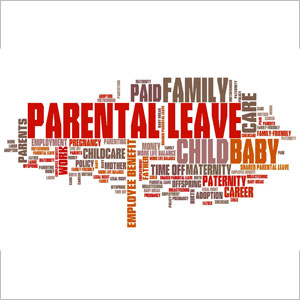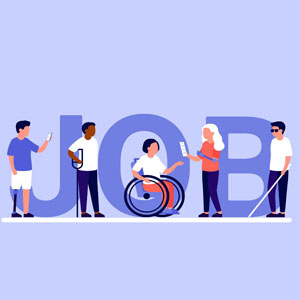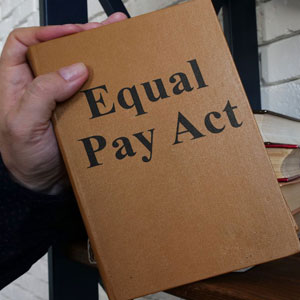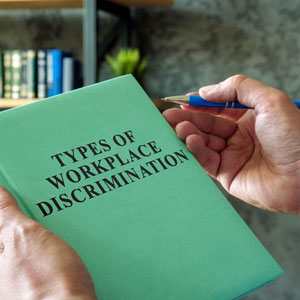
California employees are eligible for Paid Family Leave (PFL) benefits under the California State Disability Insurance (SDI) program. Paid Family Leave allows eligible employees to take time off work to care for a seriously ill family member or bond with a new child. Paid Family Leave Benefits For Eligible California Employees: Under California law, eligible employees can receive up to six weeks of PFL benefits in 12 months. The benefit amount is based on a percentage of the employee's weekly wages, up to a maximum amount set by the state. To be eligible for PFL benefits, employees must have paid into the SDI program through payroll deductions and meet other eligibility requirements, such as having worked for the employer for a certain amount of time and having a qualifying reason for the leave. California Paid Family Leave: What Is A Qualifying Reason? In California, the Paid Family Leave (PFL) program provides eligible employees with partial…Read More

Whistleblower lawsuits are essential for California employees to expose and hold their employers accountable for illegal or unethical behavior. However, these lawsuits can also raise concerns about confidentiality and privacy. In California, whistleblower laws provide some protections for employees who file suit, but the extent of these protections can vary depending on the circumstances. California whistleblower laws protect employees who report state or federal law violations or refuse to participate in illegal or unethical behavior. These laws also prohibit employers from retaliating against employees who engage in these protected activities. Retaliation can take many forms, including termination, demotion, harassment, or other adverse actions. When an employee files a whistleblower lawsuit, they may be required to disclose certain information about the alleged misconduct, including the identities of witnesses and other evidence. This information can be sensitive and potentially damaging to both the employer and the employees involved. Due to the sensitive nature of info connected to…Read More

According to the International Labor Organization (ILO), the global employment rate for people with disabilities is 24.5% lower than for non-disabled people. The employment rate for Americans with disabilities is 46.4% lower than for non-disabled people. These statistics represent what is called the disability employment gap. The big question is whether or not we can close the gap. What Is The Disability Employment Gap? A billion people are living with disabilities worldwide (millions in the United States). About 15% of the world's population suffers from a disability. Unfortunately, many people living with disabilities experience workplace discrimination that can start before they're even hired. Many people with disabilities are dismissed because of their disability during job interviews, even though they are fully capable of completing the necessary job duties. Disability discrimination during the hiring process and in workplaces across the nation created an employment gap between those living with disabilities and those not living with disabilities…Read More

Workplace discrimination can be a confusing concept. So it's best to begin any discussion with a definition. Workplace discrimination is when an employer treats one of their workers less favorably than another worker (or workers) based on a specific trait or characteristic like national origin, race, age, gender, or disability. Once the issue is defined, the next step is learning to identify instances of workplace discrimination. Workplace Discrimination: Common Warning Signs Harmful jokes regarding a worker's gender, race, sexual orientation, national orientation, religion, disability, etc. Persistent bullying or "hazing" Physical harassment Disparate treatment amongst the workforce Workplace Discrimination is Illegal Under Federal and State Law: While workplace discrimination is illegal under federal and state law, it can be difficult to prove - particularly when it occurs during the hiring process. Many employers violate the law during the hiring process when they pass up job applicants for discriminatory reasons. If you believe a potential employer passed…Read More

As a California employee, you have the right to a workplace free of discrimination. Employers are prohibited from taking any action that violates your right to a safe, discrimination-free workplace or the same rights afforded to your co-workers. Employers are also prohibited from taking adverse action against an employee for reporting incidents of discrimination or other employment violations. However, some California employees aren't fully protecting their rights in the workplace because they aren't sure what qualifies as an adverse action. Common Types Of Adverse Actions Seen In California Workplaces: Termination of employment Belittling an employee in the media, on social media, or in company newsletters, memos, etc. Threatening demotion, a pay cut, or an unfavorable relocation or reassignment Taking away supervisory responsibilities Micromanaging / overly scrutinizing, analyzing, or examining your work Threatening an employee or a member of the employee's family with an immigration action (like deportation) Adverse employment actions can take many forms, but…Read More

Being fired from a job can feel very personal - particularly if you aren't sure why your employer terminated your employment. Many jobs in the United States are considered at-will employment, which means employers can terminate employment at any time. However, some terminations are considered wrongful terminations. When Is A Termination A Wrongful Termination? If your termination violates anti-discrimination laws, breaches a contract, or is an act of retaliation, it is legally considered a wrongful termination. If you believe you have been wrongfully terminated, contact an experienced employment law attorney to help you fight the wrongful termination and protect your rights. Do You Need A Wrongful Termination Attorney? Almost every firing feels personal, so it can be challenging to determine whether your termination legally qualifies as wrongful termination or not. You can't prove and fight a wrongful termination or protect your rights as an employee if you aren't sure you even have a case, so…Read More

The explosion of workplace surveillance that followed millions of workers to their home offices during the pandemic has opened the door to a massive question of workplace and employee privacy. California telecommuters should be familiar with the laws that protect their rights in the workplace, even when that workplace is their own home. How Are California Employers Monitoring Their At-Home Workers: Pre-pandemic, many managers would walk through the office, dropping in on team members periodically to check in on their staff. Since the pandemic, managing staff has abruptly changed. New methods of supervising employees became necessary: Software installed on company-provided laptops to track time Monitoring keystrokes Monitoring mouse movement Monitoring screen activity Tracking location by GPS on electronic devices, laptops, phones, or vehicles Monitoring social media accounts Monitoring internet surfing activity Monitoring logins Monitoring messaging apps Monitoring collaborative programs and apps like Microsoft Teams, Google Workspace, Microsoft Office, Slack, etc. to track an employee's time…Read More

California employees who need clarification on the Equal Pay Act may worry that it could affect their paychecks. To avoid unnecessary stress, get to know some of the basics. What Is California's Equal Pay Act? California's Equal Pay Act is part of the California Labor Code (Section 1197.5 and Labor Code Section 432.3). While the California Equal Pay Act is not new, numerous changes have occurred since its creation. The California Equal Pay Act prohibits employers from paying employees less than other employees of the opposite sex to complete equal work and has done so for decades. But when Governor Brown signed the California Fair Pay Act in 2015, he strengthened the Equal Pay Act and indicated that California was committed to reaching real gender pay equity. Changes to the Equal Pay Act Throughout the Years: Since its inception, there have been many changes to the original Equal Pay Act, but the most significant were:…Read More

Nonexempt employees are entitled to one 30-minute meal break for a shift longer than five hours and a second 30-minute meal break for a shift longer than ten hours. Nonexempt employees are entitled to a ten-minute rest break for every four-hour shift they work. California workers should be aware of their rights in the workplace and actively seek to protect themselves when an employer violates labor law. What Happens When An Employee Isn't Given A Meal Break Or Rest Period? If a California employer fails to provide an employee with a proper meal or rest period (as required by law), the employer must pay the employee an additional hour of pay. This extra pay is commonly referred to as "premium pay." Premium constitutes wages and must be reported on the itemized wage statement. Employers are also required to pay any necessary premium pay for missed meal breaks and rest periods by the statutory deadline if…Read More

Federal anti-discrimination laws generally apply to private employers with at least 15 employees. However, California prohibitions reach even smaller private employers prohibiting employers of 5 or more employees from discriminating against job applicants or employees or retaliating against them for asserting their rights. Discrimination in California Workplaces Laws prohibiting discrimination apply to all different types of business practices, including: Advertisements for job openings Screening of job applicants Interviewing job applicants Hiring new employees Assigning transfers to employees Offering employee promotions Terminating an employee Determining compensation Controlling working conditions Selection for training opportunities Inclusion in apprenticeship programs Anti-Discrimination Laws Apply to Employers' Business Practices Anti-discrimination laws apply to public and private employers, employment agencies, and labor organizations. There are many different types of discrimination that can cause significant harm to California workers. Different Types of Discrimination Often Seen in California Workplaces: Age discrimination: discriminating against someone based on their age Disability Discrimination: discriminating against someone based…Read More